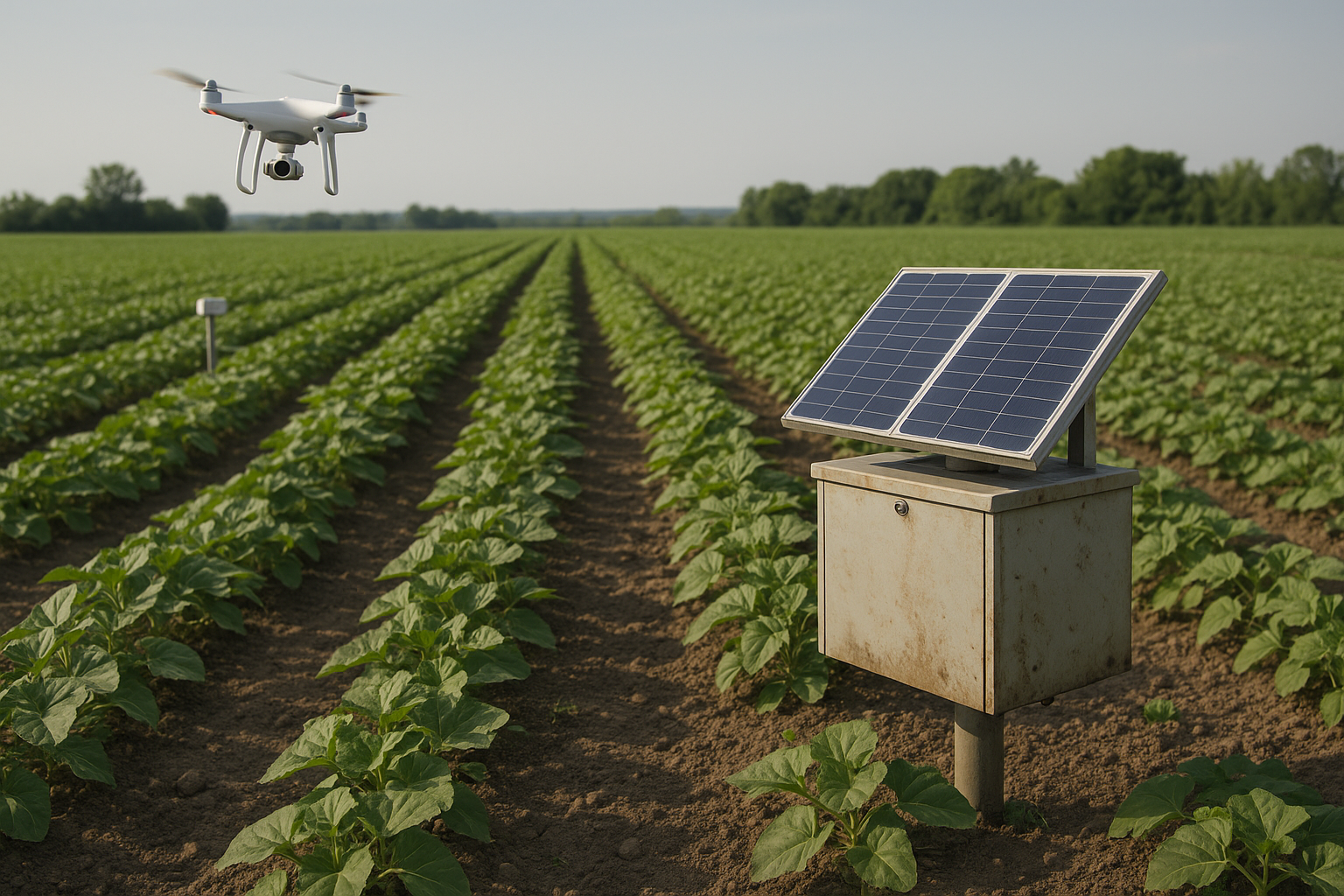Smart agriculture technologies transform crop monitoring practices
The growing need for high-throughput phenotyping is especially critical given the rising number of crop varieties and genotypes under development. As researchers seek to understand how these varieties respond to different environmental conditions, more precise tools are needed to measure traits like biomass accumulation, plant senescence, and photosynthetic activity.

Amidst mounting global food security challenges and climate variability, a new editorial outlines the need for smarter, more automated tools to guide agricultural decision-making and crop breeding programs in real time.
Published in Agriculture, the article titled “Leaning on Smart Agricultural Systems for Crop Monitoring,” highlights the transformative role of digital technologies, including remote sensing, IoT devices, and artificial intelligence, in enhancing the accuracy, objectivity, and scalability of phenotyping in agriculture. The authors assess the current limitations of traditional crop monitoring methods and propose integrated solutions to help modernize field operations, particularly in the context of environmental stressors and yield optimization.
What are the limitations of traditional crop monitoring?
According to the authors, crop monitoring today still relies heavily on manual and visual techniques that are increasingly misaligned with the complex demands of modern agriculture. These conventional methods are time-intensive, laborious, and prone to observer bias, making them insufficient for the scale and precision required by today’s breeding programs and farm management systems.
The growing need for high-throughput phenotyping is especially critical given the rising number of crop varieties and genotypes under development. As researchers seek to understand how these varieties respond to different environmental conditions, more precise tools are needed to measure traits like biomass accumulation, plant senescence, and photosynthetic activity.
Moreover, uniform fertilization and irrigation practices often ignore site-specific variability, leading to inefficient use of resources and environmental degradation. The limitations of human-based scouting in identifying early stress or disease symptoms further widen the gap between field potential and actual productivity. These shortcomings, according to the study, necessitate a smarter approach that leverages automation, data analytics, and scalable sensing technologies.
How are smart agricultural systems reshaping field phenotyping?
The editorial identifies a range of smart agricultural tools that are already making significant contributions to crop monitoring. Key technologies include remote sensing systems (such as UAVs and satellite imagery), IoT-enabled sensors, and AI-driven platforms for data processing and predictive modeling.
Remote sensing technologies allow for non-invasive, repeatable monitoring of vegetation indices and water stress, helping farmers and researchers make timely decisions. IoT-based sensor networks installed across fields track soil moisture, temperature, and atmospheric conditions with high spatial and temporal resolution. These sensors feed into centralized data systems that analyze trends and issue alerts or guidance in real time.
In the context of precision fertilization, the study highlights how decision support systems can generate application maps for nitrogen based on satellite data, field history, and soil composition. This allows for more targeted nutrient management, improving yields while minimizing runoff and overuse of agrochemicals.
The authors also discuss the use of machine learning models that integrate diverse datasets, including weather forecasts, genotype responses, and management practices, to create adaptive field strategies. These AI-driven systems are capable of identifying patterns in plant development, optimizing irrigation schedules, and predicting disease outbreaks before symptoms are visible.
However, the study cautions that model accuracy can be affected by inter-annual and inter-regional variability. For instance, algorithms trained in one climatic zone may fail to generalize effectively to another, resulting in inconsistent outputs. To address this, the authors recommend using season-specific datasets or transfer learning approaches to enhance model robustness and applicability.
Are smart tools ready to replace human monitoring?
While smart agricultural systems have demonstrated clear advantages, the authors argue that these technologies are not yet ready to fully replace manual scouting or expert evaluations. Barriers to full adoption include high initial costs, the need for specialized training, and technical challenges in interpreting complex datasets.
Instead, the editorial advocates for a hybrid approach in which digital tools augment rather than replace human expertise. In this model, smart systems take on repetitive or labor-intensive tasks such as routine data collection and processing, allowing researchers and agronomists to focus on strategic decisions and nuanced interpretation.
The authors emphasize that incorporating human oversight remains vital for verifying AI-generated outputs and adapting tools to local conditions. For example, while AI may accurately predict a fungal disease outbreak, field validation is often required to confirm the diagnosis and determine the appropriate intervention.
To improve the accessibility and scalability of smart agriculture systems, the editorial calls for broader integration of low-cost, open-access technologies. These include simplified sensors and user-friendly interfaces that can be adopted by smallholder farmers in resource-constrained regions. The development of modular platforms that allow for plug-and-play compatibility between different sensors and software tools is also identified as a future priority.
In addition, the authors highlight the role of collaboration across disciplines, bringing together agronomists, data scientists, and hardware engineers to co-design tools that are both scientifically rigorous and practically usable.
- FIRST PUBLISHED IN:
- Devdiscourse










